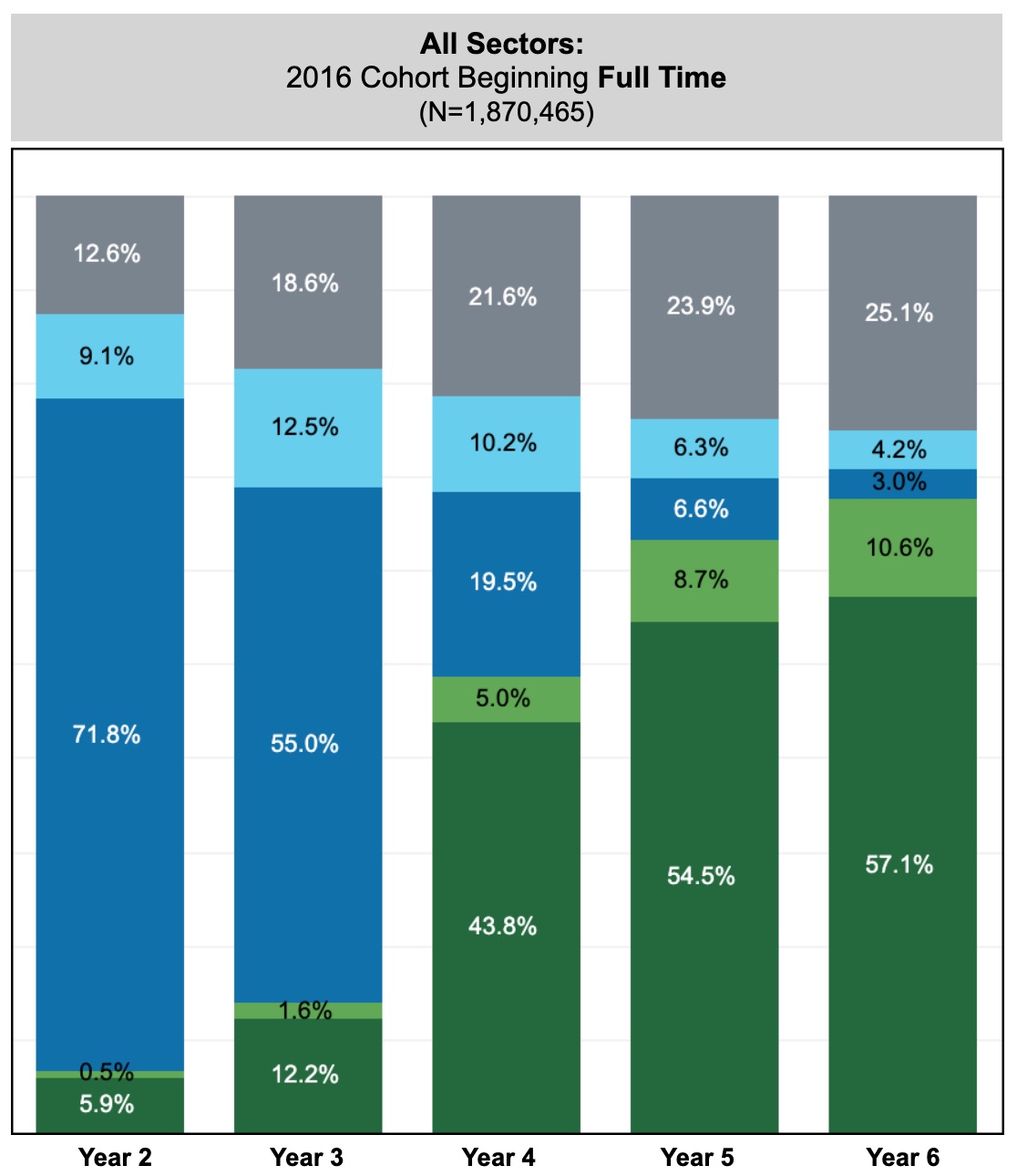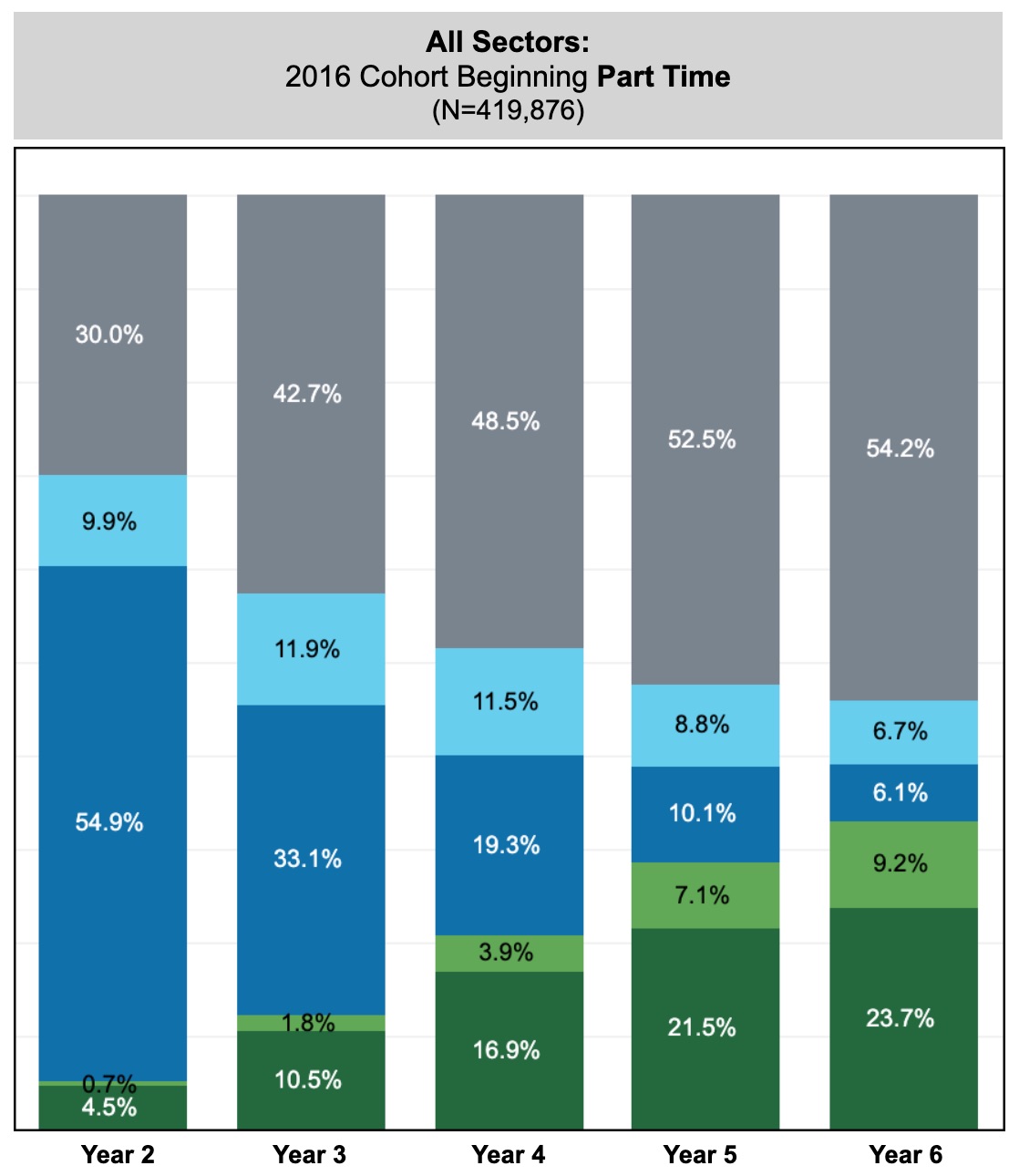- BLOG HOME
- »
- Research Services
- »
- Persistence Rate Gap Between Full-Time and Part-Time Students Begins Early and Stays Consistent in ...

Persistence Rate Gap Between Full-Time and Part-Time Students Begins Early and Stays Consistent in Subsequent Years of College Enrollment
Part-Time Starters Stop-Out More Than Twice the Rate of Full-Time Students
The National Student Clearinghouse® Research Center™ released its annual Yearly Success and Progress Rates Report for the Fall 2016 Beginning Cohort today. The report tracks yearly college outcomes for first-time degree-seeking students enrolling full-time and part-time. The latest data presents academic progress for approximately 2.3 million individuals who began college in fall 2016. Their four-year and six-year completion rates have increased compared to the fall 2015 cohort, but the disadvantage for those enrolling part-time remains unchanged.
Of 1.9 million full-time starters, 48.8 percent completed a postsecondary credential by year four and 67.7 percent by year six. These reflect completion rate gains of 1.5 percentage points (by year four) and 0.4 percentage points (by year six) over last year’s cohort. In contrast, 25.1 percent left college without earning a credential six years later, up from 24.9 percent last year.
About 20 percent of 420,000 part-time starters completed a credential by year four, while nearly half (48.5%) left without earning a credential. By year six, about a third of students graduated and 54.2 percent were no longer enrolled. Part-time starters stop out at more than twice the rate of full-time starters in each year observed and this gap begins early on, with 30 percent of part-time students having left college by the end of year two.
The Yearly Success and Progress Rates report goes beyond traditional student outcome measures by showing year-by-year rates of retention, persistence, transfer, completion, and stop-out. It shows the highest level of academic progress made, broken out by the starting institution type and enrollment intensity at entry. The report is designed to help institutions and states better identify and inform effective intervention points to increase student success.
First-Time, Full-Time Degree-Seeking Students at All Institutions

First-Time, Part-Time Degree-Seeking Students at All Institutions


Additional Resources:



